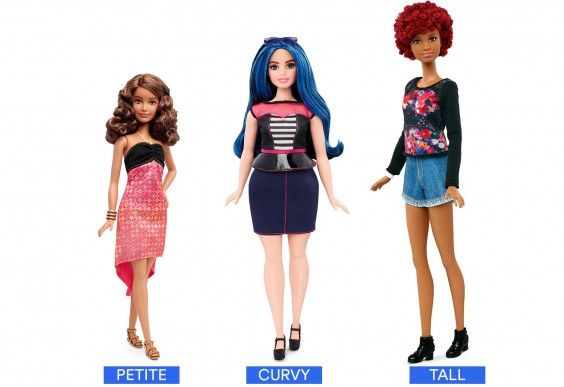Barbie just got a major overhaul. And it’s not a new career—there’s no data scientist Barbie (yet) to keep up with the times. The infamous doll is staying hip by getting some hips. Mattel announced it’s now selling curvy, tall, and petite Barbies in addition to the one we’ve known for the last 50 years.
The change (Mattel is calling it “an evolution”) comes on the heels of new skin tones and hair styles that were introduced last year. Curvy Barbie is scooping up most of the attention, and for good reason. Barbie has a booty and calves—and just generally looks a lot more like you, or at least someone you’d pass by on the street. The petite and tall Barbies are also a big step forward, showing that beauty really comes in more than one very rigid shape and size. And if you think it’s silly to connect self-confidence to what a doll looks like, there’s actual science to back us up. Studies have found that girls who played with Barbies had lower self esteem than those who didn’t.Does Barbie make girls want to be thin? The effect of experimental exposure to images of dolls on the body image of 5- to 8-year-old girls. Dittmar H, Halliwell E, Ive S. Developmental psychology, 2006, Aug.;42(2):0012-1649.”>
To celebrate the release, Mattel released an adorable video (see below). It’s a bit heavy on the cheese factor, opening with one girl saying, “It’s important for Barbies to look different, like the real people in the world.” The video may lead you to believe Mattel is joining in the body positivity movement for wholesome reasons, but the motive mostly comes down to money. Sales were down 20 percent between 2012 and 2014, as the doll was increasingly seen as being out of touch.


